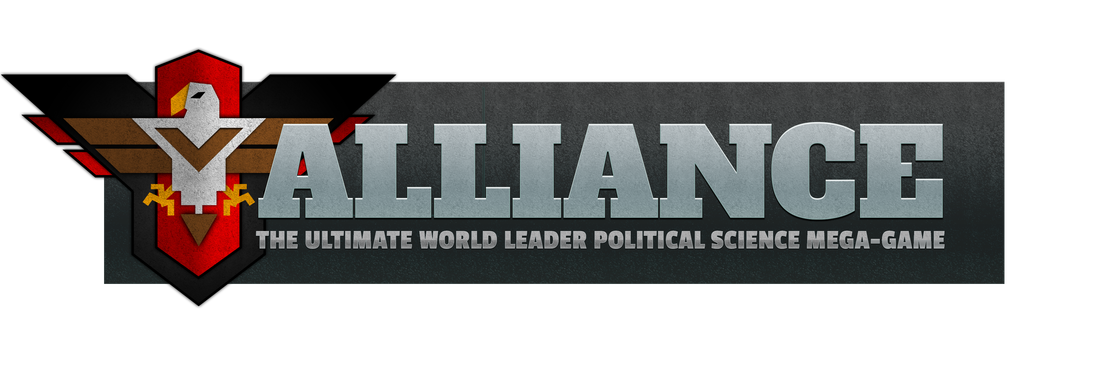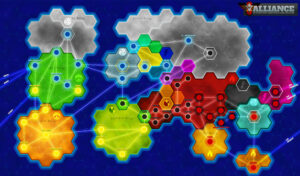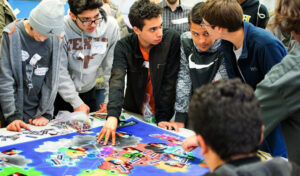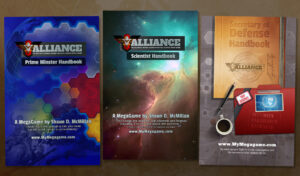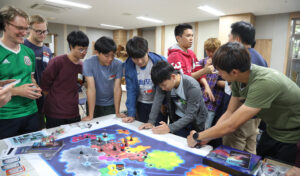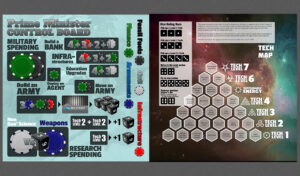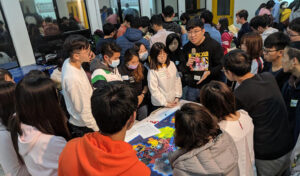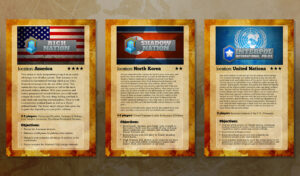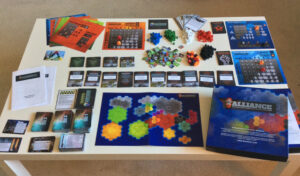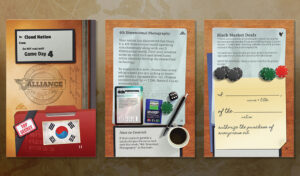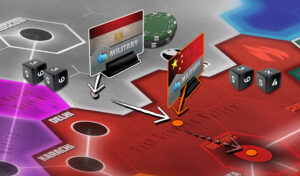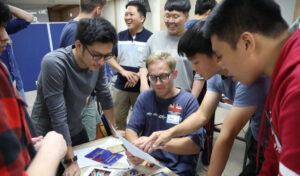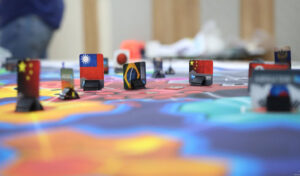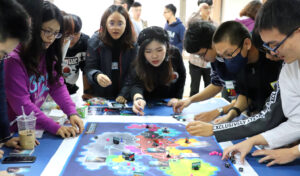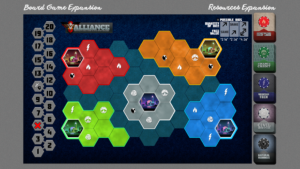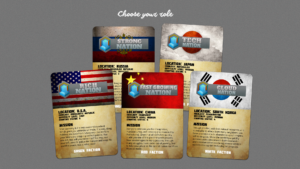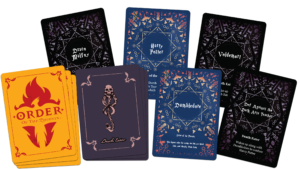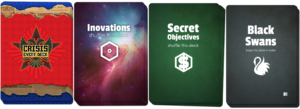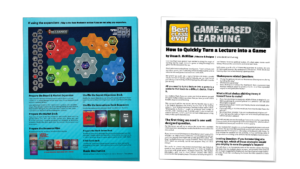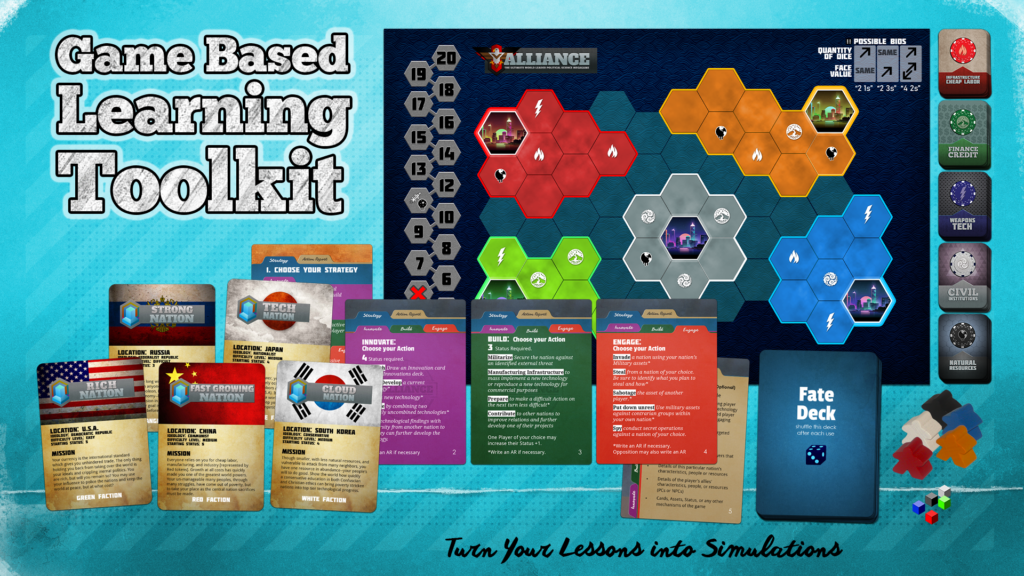
After teaching game design for 6 years, designing and running large political science megagames for 4 years, and producing my own educational board and card games, I would like to bring more teachers and students into the magic circle of game-based learning.
Create Wildly Engaging Learning Experiences for Your Students

Game-based learning is so much more than just gamification.
Gamification, which typically takes the form of rewarding your students with points, badges, special privileges, or any type of extrinsic rewards for good behavior devalues learning and doing the right thing for its own sake. This is only a small improvement upon the carrot and stick model. While it does create a fun atmosphere to add story, narrative, and theme to your overall lesson plans, it doesn’t actually change the lessons themselves. In essence, gamification is chocolate-covered broccoli. Covering up the taste of broccoli with the taste of chocolate is not going to make anyone suddenly find healthy eating intrinsically rewarding.
The difference between gamification and game-based learning is that a game-based lesson makes the learning itself a game. It is fundamentally different than the typical lesson because it puts the students in the driver’s seat and creates a dynamic experience where they are actively engaged every moment and the entire experience changes based on each interaction.
As teachers we have to be careful not to fool ourselves. Lectures are fun for teachers because the teacher has an audience and is actively engaged in speaking. But students only get to respond if the teacher lets them. Traditional teaching is fun, comfortable, and rewarding for us but boring for the students. Games on the other hand allow students to collectively take the lead.
Exponentional Learning – Simulation Game-Based Learning Provides Immediate Feedback
Providing worksheets, homework, quizzes, and assessments have typically been the only way to provide feedback. Ideally a student would learn the lesson, practice it, check to see if they did it correctly, and then practice with a better modified understanding of what they learned, and repeat this process until they master the technique. But in reality this loop takes so long to provide feedback to students, that they often do not find out that they are failing until they get a report card, at which point it is nearly too late for an intervention. Games provide constant immediate feedback. Games also simulate reality far more closely than traditional teaching methods, so the knowledge they learn in games also transfers to reality far better. Game-based simulations create dynamic exciting positive feed-back loops that get students learning exponentially more in a shorter period of time than traditional learning methods.

A MegaGame You Can Play With Small Groups
A lot of teachers and students advocating for game based learning have expressed interest in ALLIANCE, our world leader political science megagame for 12-72 participants over the past few years. But many find it intimidating to host such a large event without starting small. So we have developed an easy way to for teachers to bring the game to the table with 3-6 participants. This newest version can easily be modified by the teacher to fit many different learning objectives or expanded into bigger and bigger games.
Easy to Learn Rules
To make game-based learning more accessible we also strived to make the initial rules extremely light and easy to learn. They are also very open, meaning players are not restricted to a limited set of strict mechanics, but they can bring in their own creativity. This works very similar to Table Top RPG rules except you don’t need an entire hour to develop characters unless you want to. Students can easily jump in and begin a session as long as one person (most likely the teacher) knows the most basic rules.
Modular Expansions
Once you learn the initial rules, there are modular expansions you can easily add to have a more structured or thematic game play experience. Some of the expansions add a map to the table for a more strategic board game experience. Another adds currencies for deeper trade mechanics. Crisis decks simulate international crises dealing with new technologies, environmental sustainability, and the energy crisis.
Learn to Play Through the Internet

We have a virtual version of the game available for play through Table Top Simulator. This software has a one-time-cost of about $20, but it gives you access to a huge library of popular designer board games as well as all of my educational games. I regularly host game nights in which we game test my newest game prototypes. Feel free to join once you have Table Top Simulator!
Create Your Own Themes to Achieve Your Own Learning Objectives
The core of the game requires easy-to-find inexpensive materials allowing you to easily modify and make your own game using similar game mechanics. Once players learn the rules from the expansions they will have access to enough game mechanisms to begin crafting their own unique games. By creating their own games students can learn systems thinking or how social behavior emerges from simple rules, how incentives influence outcomes, and inspire debates over the critical role that choices, privilege, equal opportunities, collaboration, competition, and good fortune play in determining economic outcomes.
The core game is also flexible enough that you can use it for anything from fictional character-driven worlds to broad geo-political simulations. Whether role playing as a fantastical character, as the world leader of a realistic political entity, or controlling the evolution of an empire over the course of its rise and fall, games can be used to teach specific subject areas including ethics, science, economics, business, social sciences, history, literature, or language. The only subject we have not found a way to to teach with these mechanics is math, but it works for most subjects because the key feature of game-based learning is that the mechanics themselves dynamically drive the learning and engagement.
By paper-prototyping your own games you can also teach your students how to innovate, rapid-prototype, and develop their own products. While role-playing in the game they will need to evaluate strategies and sell each other on their agenda which helps them develop communication and salesmanship skills. These core entrepreneurial skills will equip them to think more independently and turn them into creative problem-solvers who can adapt to the uncertainties we will all face in the future.
The 4 Global Competencies
In the world of education curriculum designers have been looking for ways to teach
- Communication
- Collaboration
- Critical Thinking &
- Creativity
The tension in the game arises from the conflicting agendas among the different roles in the game. These conflicts allow students the opportunity to sell each other on different agendas, philosophical differences, and evaluate each other’s ability to influence one another.
Games Facilitate Social Interactions
Turn-based play facilitates participation from each every player according to their own unique strengths. It scaffolds social interactions providing space to shy players, and limiting those who might dominate. Games simultaneously build a playful atmosphere and forge connections between participants who otherwise might never interact. A good game leaves players with a deep emotional experience that they will be eager to talk about long after the game ends. So it is a great way to launch an important discussion or series of lessons about a deep subject.
Games as both Launch Events and Assessment
Games alone are not enough. But they make great catalysts for deep critical thinking and discussion. We still need traditional teaching methods, but simulations and games allow students to put what they learned into practice. Games create the powerful combination of safe spaces to play and what business and military leaders call, V.U.C.A. volatility, uncertainty, complexity, and ambiguity. Allow your students to put what they learn to the ultimate test.
Learn to Design Your Own Games While Playing Ours
Our core game is basically a combination of competing agendas, choosing an action to take, and creative storytelling. The outcomes of every action are determined through a combination of randomness and discourse between the various players.
Simply Modify or Adapt the Rules
To make your own game or theme you could use the same rules but simply write your own conflicting agendas or characters, and allow the players to build their own world. The various different currencies could be made to represent different strengths, weaknesses, abilities, or resources available among the different characters or factions.
Turn Your Current Lecture Into a Game
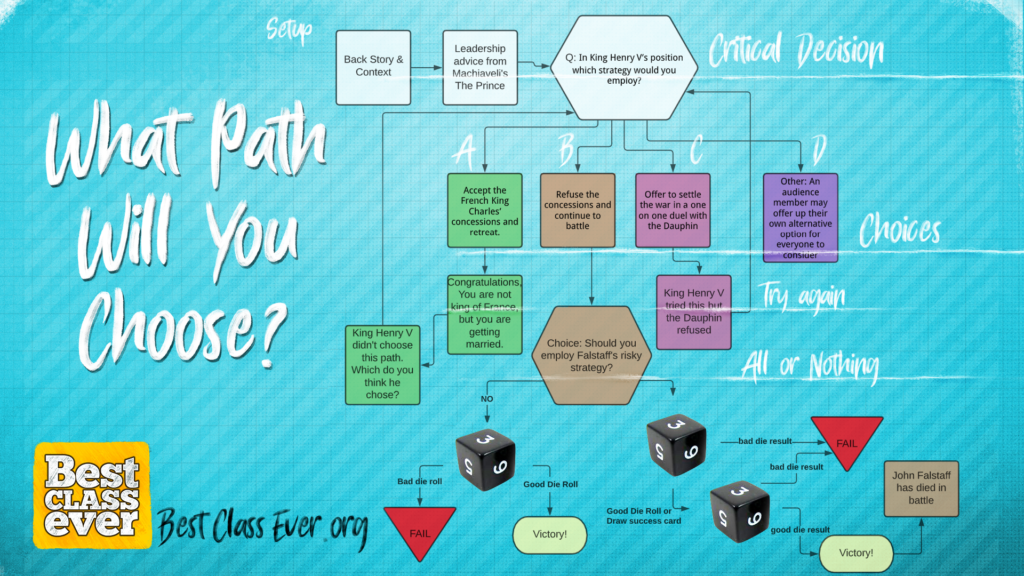
Included in the Game-Based Learning Toolkit is a step-by-step guide on how to turn your own lectures into a game. Nearly every joke, lesson, and story from literature or history follows the 3-act structure. This structure lends itself to simple game mechanisms. Through the use of any of the following items including index cards, pencils, dice, voting systems, slide show presentations, voting or live-polling you can easily make your lectures as engaging as a live game. To learn how simply read the PDF provided in our tool kit.
What is in the Game-Based Learning Tool Kit?
Upon purchase you will be mailed the following professionally printed guides and game components
- Step-by-step Instructions on How to Turn a Lecture Into a Game
- Core game rules
- Fate Deck
- Role Cards
- Action Report Score Pad
- Market Deck of 5 Resources for deeper Economic mechanics
- Liar’s Dice for deeper Battling mechanics
Printable PDFs are included with every purchase!
- Digital PDF: Step-by-step Instructions on How to Turn a Lecture Into a Game
- Digital PDF: Core game rules
- Digital PDF: Fate Deck *
- Digital PDF: Role Cards
- Digital PDF: Action Reports
- Digital PDF: Innovation Deck & Black Swans Deck to simulate Technological Crises
- Digital PDF: Sustainable Energy themed Crisis Deck
- Digital PDF: Harry Potter School of Wizardry themed version of Resistance Avalon (popular social deduction game)
* IF YOU ONLY GET THE DIGITAL DOWNLOAD It is best if printed on card stock or slipped into poker-sized card sleeves
These cards need to be shuffled after each turn so you really do need to either
– order our professional print or
– simulate a draw from the deck using one six-sided dice
– simulate a draw from this deck using RNG (virtual dice roll)
– or print the PDF yourself and cut the cards perfectly to slip them into card sleeves
For a little more fun you can add your own…
If you download and print the Digital PDF Download without ordering a professional print we suggest you also find
- some Index cards
- A set of 5 color poker chips (Red, Blue, Green, White, & Black)
- Counting cubes, pawns, or some type of markers (Red, Blue, Green, White, & Black)
- 8 six-sided dice (or 2 six-sided dice at the very least)
*Includes Digital PDFs *
Want to try a deckbuilder or expand into a full classroom Megagame?
We have even more games available after you get comfortable with our Tabletop Edition
- ALLIANCE Trade Wars (2-5 players) – Standalone Deck Builder game similar to Dominion but with bluffing mechanics
- ALLIANCE The Ultimate World Leader Political Science MegaGame (12-72 players)
A bit overwhelmed? Start here.
New to educational board games? Don’t worry, we have you covered. Here is a very simple, step-by-step, 1 round of turns 3-player tutorial on how to play ALLIANCE you can download for free. Simple print the PDF, cut up the cards, and try it yourself.
